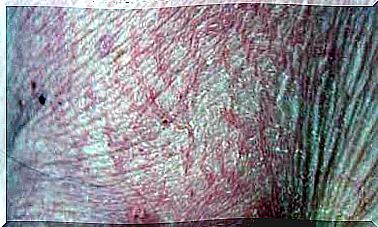If You Have A Cat Allergy, This Interests You
There are a large number of people in the world who have a cat allergy. Those common pets of families all over the world can be a discomfort for their own and others.
Cats are a common source of allergens. This is the name given to the specific proteins that trigger an allergic reaction in susceptible individuals.
The scales detached from the animal’s skin are the main source of them. It is what we know as cat dander . The rest of the allergens are found in the saliva and urine of the animal. One protein in particular, Fel d1 is responsible for 95% of allergies to cats.
What about asthmatics and patients with allergic rhinitis?
Immediate hypersensitivity caused by inhaled allergens is very common among children and young adults with asthma and rhinitis. This makes them a sensitive group for allergies to cats.
In the case of people who have a susceptibility to allergens in cats, their symptoms will be the usual ones of allergic rhinitis or asthmatic crisis. At this point, there will be no differences with the signs that an allergic to other substances suffers.
Cat dander is shed in the spring and accumulates again in the fall. Therefore, the seasonal rhythm can be confusing, making the differential diagnosis difficult with rhinitis caused by pollens, for example.
This is more profound in younger children with allergies to cats, since in those over 4 years of age the symptoms are milder, although long-lasting. Older age tends to lose the predominance of symptoms over time.
It is also true that people who live with cats develop tolerance. That is, cat allergy symptoms are minimized over time. There is a process of getting used to the animal’s allergen doses.

What are the symptoms of a cat allergy?
Cat allergy shares symptoms with other allergic pathologies. There is a runny nose, that is, a runny nose. Also stuffy nose with a constant flow of fluid down the throat, known as postnasal drainage.
Sneezing is almost the norm, accompanied by itching in the palate, nose, ears and eyes. This leads to allergic conjunctivitis and dermatitis, which is localized on the face, neck, and lower limbs. Sometimes, the most affected are the areas of the skin in contact with the animal, however, this is not always the case.
Asthmatic attacks are an expression of severity of allergy to cats. The bronchi close and the characteristic hiss of air appears trying to get out. In a person with a history of asthma the picture is worse.
What to do if you have a cat allergy?
The most effective way to control any allergic manifestation, be it rhinitis or asthma, is to not be exposed to the allergen that triggers it. It is for this reason that the most effective measure to control allergy to cats is to keep the animals out of the house .
Cat allergens are carried on clothing, accumulate on sofas, rugs, mattresses, and more they can stay in the air for long periods. This is so due to its small size.
Other preventive measures, although recommended, have not been shown to be as effective as moving away from the source of allergy. Examples of these recommendations are as follows:
- Use air filters.
- Aggressively cleaning carpets, sofas and beds with HEPA filters.
- Bathe pets regularly.
- Change used clothes.
- Use desensitizing immunotherapy.
Even when cats are removed from the home, allergens persist for many weeks or months, and aggressive cleaning is required to speed up removal.

Are there hypoallergenic cats?
There was once talk of the existence of hypoallergenic cats. The reality is that to date there is no evidence that there are breeds with a higher or lower level of allergens. Some researchers have suggested various approaches to create hypoallergenic cats, deleting the gene for the Fel d1 protein. While some of the strategies are used, t They have not yet shown their benefit.
A doctor can help you
If you love cats and do not want to stop living with them, consult a doctor to assess some strategies that reduce exposure. There are alternatives and habits that can be adopted without causing sudden changes.
In the event of cat allergy symptoms, a health professional can also prescribe medication to control symptoms, such as antihistamines, beta agonists, anti-inflammatories and specific immunotherapy.









